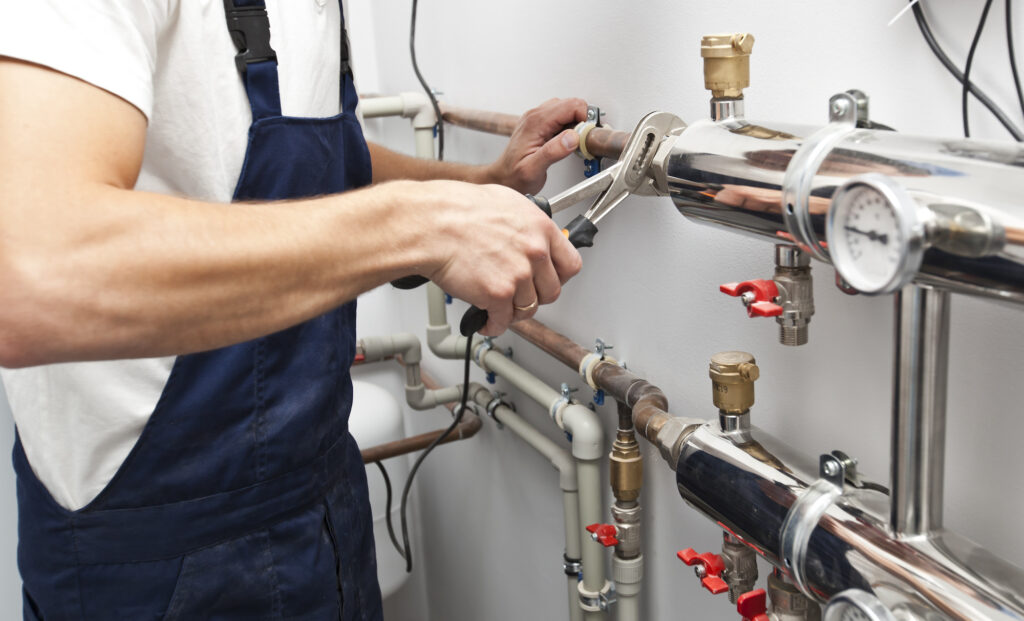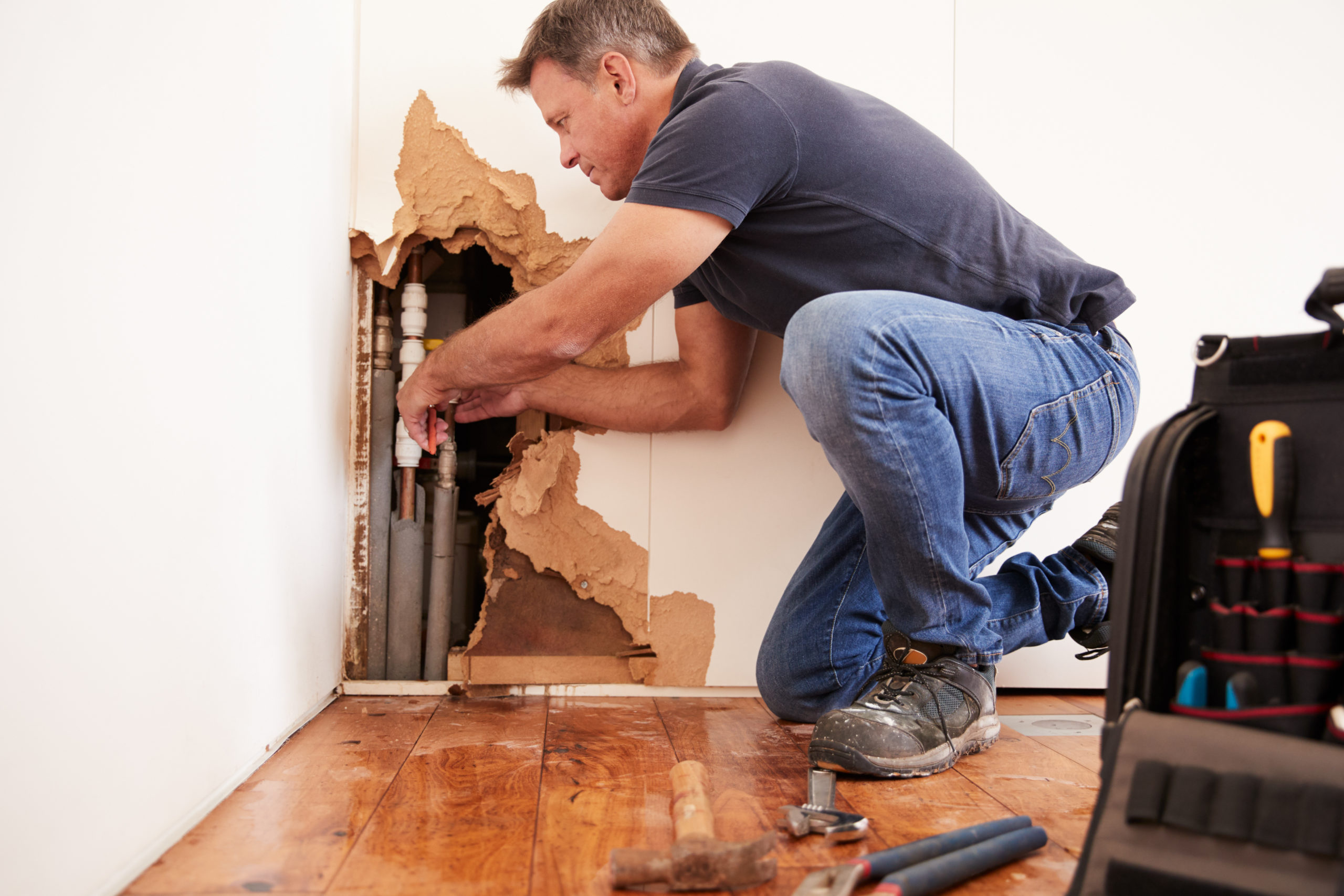Gaining Insight into Home Plumbing Basics: A Beginner's Handbook
Gaining Insight into Home Plumbing Basics: A Beginner's Handbook
Blog Article
We have discovered this article involving How Does the Plumbing Work in Your Home? below on the web and felt it made perfect sense to talk about it with you on this page.

Plumbing is a vital element of any home, in charge of supplying tidy water for drinking, cooking, and bathing, as well as getting rid of wastewater safely. Recognizing the fundamentals of home plumbing is important for every house owner to ensure appropriate maintenance, troubleshooting, and, if necessary, repair services. In this newbie's overview, we'll cover the essential principles of home plumbing to help you end up being extra accustomed to just how it functions.
Water Heating Unit
The water heater is responsible for heating water for residential use, consisting of bathing, cooking, and cleansing. Usual sorts of water heaters include tank-type water heaters, tankless (on-demand) hot water heater, and heat pump water heaters. The hot water heater is attached to the supply of water system and supplies hot water to plumbing fixtures as needed.
Drainage System
The drainage system gets rid of wastewater from your home and carries it away to a sewage therapy facility or septic system. It contains a network of pipes, installations, and fixtures that transport wastewater from plumbing components to the major drain line or sewage-disposal tank. Correct drain is important to protect against clogs, backups, and sewage leakages.
Ventilation System
The air flow system assists maintain correct air pressure and prevent sewage system gases from entering your home. Air vent pipes, additionally called air vent stacks, prolong from plumbing components to the roofing, enabling drain gases to get away safely outside. Ventilation pipelines likewise enable air to get in the water drainage system, facilitating smooth wastewater circulation and avoiding suction or vacuum cleaner effects.
Water System
The water system brings tidy water right into your home from a metropolitan water resource or a private well. It consists of a major water line that attaches to your home's plumbing system, normally located underground. A water meter measures the quantity of water eaten, while a shut-off shutoff enables you to control the circulation of water into your home.
Plumbing Fixtures
Plumbing components are tools that supply water to numerous parts of your home and include sinks, faucets, commodes, showers, tubs, and home appliances such as dishwashing machines and washing makers. Each fixture is connected to the water supply system via pipelines and fittings and may have its shut-off shutoff for maintenance or emergency situations.
Typical Plumbing Devices
Having the right devices on hand is vital for carrying out standard plumbing repair services and maintenance jobs. Typical plumbing devices include flexible wrenches, pipe wrenches, pliers, pipeline cutters, hacksaws, plungers, augers (or drainpipe serpents), and Teflon tape. Having these devices easily offered can help you deal with minor plumbing issues effectively.
Basic Plumbing Fixings
While some plumbing repair services may need professional help, numerous usual issues can be attended to with basic DIY techniques. Discovering how to deal with a leaking tap, unclog a drain, change a bathroom flapper, or fix a dripping showerhead can save you money and time on plumbing repairs.
Conclusion
Understanding the essentials of home plumbing is vital for every single home owner to maintain a risk-free, useful, and efficient plumbing system. By familiarizing on your own with the water supply system, plumbing fixtures, water drainage system, air flow system, usual plumbing tools, and standard fixings, you can confidently resolve minor plumbing concerns and guarantee your home's plumbing system operates smoothly.
Plumbing for Beginners: A Comprehensive Guide
If you’re a beginner when it comes to plumbing, don’t worry; you’re not alone. Plumbing may seem intimidating, but with the right knowledge and a little practice, you can handle many common plumbing issues on your own. In this comprehensive guide, we will demystify the world of plumbing for beginners, providing you with the basic knowledge and skills needed to tackle common plumbing problems and even take on some DIY plumbing projects.
The Importance of Basic Plumbing Knowledge for Beginners:
First and foremost, basic plumbing knowledge gives you a solid foundation. It helps you grasp the key concepts and terminology that are essential in this field. By learning the basics, you’ll be able to build upon that knowledge and tackle more complex plumbing tasks in the future.
Having a basic understanding of plumbing also enables you to handle common issues that may arise in your home. Picture this: a leaky faucet or a clogged drain. With some basic plumbing knowledge, you’ll have the confidence to troubleshoot and fix these problems on your own. It saves you from unnecessary expenses and the hassle of waiting for a professional to arrive.
As a beginner, learning the basics of plumbing empowers you to take care of your own home. It gives you a sense of independence and self-reliance. You’ll no longer have to rely solely on professionals for every small issue that pops up. Instead, you can handle many tasks yourself, saving time and money in the process.
Remember, everyone starts as a beginner. Embrace the learning process and take small steps to expand your plumbing knowledge. There are plenty of online resources, tutorials, and even local workshops that talk about plumbing for beginners.
Essential Tools for Plumbing for Beginners
As you start your plumbing journey, having the right tools in your toolbox is crucial. Let’s explore some of the must-have tools:
Adjustable Wrench:
This versatile tool is a staple in any plumber’s toolbox. It allows you to tighten or loosen nuts and bolts of various sizes. Make sure to have an adjustable wrench with a comfortable grip.
Pipe Wrench:
A pipe wrench is specifically designed for gripping and turning pipes. It has serrated jaws that provide a strong grip, making it easier to loosen or tighten threaded pipes and fittings.
Plunger:
The plunger is a simple yet effective tool for clearing clogged drains and toilets. It creates suction when you push and pull, helping to dislodge blockages. Keep a good-quality plunger handy for those unexpected clogs.
Pipe Cutter:
When it comes to cutting pipes, a pipe cutter is your go-to tool. It creates clean, precise cuts without damaging the pipe. Look for a pipe cutter that can handle the pipe sizes you’re working with.
Hacksaw:
A hacksaw is useful for cutting through pipes, screws, and other materials. It’s a versatile tool that can handle different cutting tasks. Remember to use a blade suitable for cutting metal.
Tape Measure:
Accurate measurements are crucial in plumbing. A tape measure allows you to measure pipe lengths, distances, and dimensions accurately. Opt for a sturdy tape measure that extends a good length.
Pliers:
Pliers come in handy for various tasks, such as gripping, bending, and cutting. Slip-joint pliers with adjustable jaws are great for gripping pipes, nuts, and bolts.

We had been shown that report about How Does the Plumbing Work in Your Home? from someone on our other blog. So long as you enjoyed reading our page please make sure you remember to pass it around. We treasure your readership.
Click Here Report this page